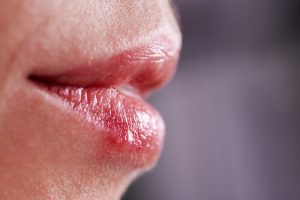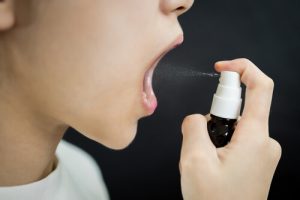Contents
When it comes to lip discomfort, it’s crucial to distinguish between sunburned lips vs cold sore. Both conditions can cause pain and unsightly symptoms, but they have different causes and treatments. This article will explore the main differences and how to identify each issue, making you better equipped to manage and treat your lip problems effectively.
Understanding Sunburned Lips
Sunburned lips are a common yet often overlooked consequence of excessive sun exposure. Understanding how to recognize, treat, and prevent this condition is crucial for maintaining lip health.
Symptoms
Sunburned lips typically present with redness, swelling, tenderness, and a burning sensation. The skin on the lips may become dry, chapped, and start to peel. Sunburn blisters may form in severe cases, leading to further discomfort and potential infection.
Causes
The primary cause of sunburned lips is prolonged exposure to sun ultraviolet (UV) radiation. Unlike other skin parts, the lips lack melanin, making them particularly vulnerable to UV damage. Factors such as high altitudes, reflective surfaces like water or snow, and not using protective lip balm can increase the risk of sunburned lips.
Treatment
Immediate treatment involves cooling the affected area with cold compresses, keeping the lips hydrated with water, and moisturizing lip balms containing aloe vera or hyaluronic acid. Over-the-counter anti-inflammatory medications can alleviate pain and swelling. It is essential to avoid additional sun exposure until the lips fully heal.
Prevention
Preventing sunburned lips involves using a broad-spectrum lip balm with an SPF of at least 30, reapplying every two hours, and after eating or drinking. Wearing a hat and seeking shade areas during peak sun hours can significantly lower the risk. Additionally, staying hydrated helps maintain lip health and resilience.
Identifying Cold Sores
Cold sores, also called fever blisters, are a common and often recurring condition caused by the herpes simplex virus (HSV). Identifying cold sores is crucial for effectively managing and preventing outbreaks.
Symptoms
Cold sores usually begin with a tingling or itching sensation around the lips or mouth, which is followed by the development of small, fluid-filled blisters. These cold sore blisters can be painful and are often grouped. Over a few days, the blisters burst and form a crust, eventually healing without leaving scars. Additional symptoms may include swelling, redness, and a burning sensation.
Causes
Cold sores are resulting from viral infection like the herpes simplex virus type 1 (HSV-1), which can be transmitted through close personal contact such as kissing, sharing utensils, or touching an infected area. Once the virus infects the body, it stays dormant in the nerve cells and by triggers such as stress, illness, hormonal changes, or sun exposure it can be reactivated.
Diagnosis
Cold sores are usually diagnosed based on their characteristic appearance and symptoms. Sometimes, a healthcare provider may take a swab from the sore to test for the presence of HSV. Blood tests can also detect antibodies to the virus, indicating a previous infection.
Prevention
Preventing cold sore outbreaks involves managing known triggers and maintaining a healthy immune system. Regular lip balm with SPF can protect the lips from sun-induced outbreaks. Stress management techniques, a balanced diet, and enough sleep hours can also help reduce the frequency of outbreaks. A healthcare provider may recommend daily antiviral medication for individuals with frequent or severe cold sores.
Symptoms Comparison: Sunburned Lips vs Cold Sore
Distinguishing between sunburned lips and a cold sore is essential for appropriate treatment, as each condition presents unique symptoms despite similar initial discomfort around the lips.
Appearance and Sensation
Sunburned lips typically appear red and swollen and feel tender to the touch. They may also peel and sometimes form blisters if the sunburn is severe. In contrast, cold sores begin as a tingling, itching sensation around the mouth, followed by small, fluid-filled blisters on or around the lips. These blisters can burst, causing open sores that eventually crust over and heal.
Cause
Sunburned lips are directly caused by excessive exposure to UV rays, leading to the typical symptoms of sunburn, such as redness and blistering. Cold sores, on the other hand, result from the infection of the herpes simplex virus and can be triggered by factors such as stress, illness, or increased sun exposure.
Location
Sunburned lips uniformly affect the entire lip surface, especially in areas most exposed to sunlight. Cold sores usually appear on the edge of the lip or, at times, around the mouth area and are not limited to sun-exposed regions.
Progression of Symptoms
The symptoms of sunburned lips generally resolve as the sunburn heals, which can take anywhere from a few days to a week with proper care, such as the application of aloe vera or cold compresses. On the other hand, cold sore symptoms evolve through stages from tingling and blistering to oozing and crusting, typically healing within two weeks.
Effective Treatments for Sunburned Lips
Treating sunburned lips promptly and effectively alleviates discomfort and prevents further damage. Here are some effective treatments for sunburned lips that can help soothe and heal this delicate area.
Hydration: Keeping the lips well-hydrated is crucial. Consume ample water to ensure hydration is maintained from within.
Cold Compresses: Put cold compresses or ice packs cloaked in a cloth on the affected area to reduce swelling and relieve pain. Avoid applying ice directly to the skin.
Aloe Vera: Use aloe vera gel, which has soothing and anti-inflammatory properties, to help heal sunburned lips and reduce redness and swelling.
Over-the-counter Creams: Use over-the-counter creams containing hydrocortisone to reduce inflammation and pain. Be sure to pick products specifically formulated for use on lips.
Petroleum Jelly: Apply a light coating of petroleum jelly to maintain lip hydration and form a protective barrier, which helps prevent additional irritation and aids in the healing process.
Sun Protection: Once the lips begin to heal, use a lip balm with high SPF to protect them from further sun exposure and prevent future sunburns.
Managing and Preventing Cold Sores
Cold sores, caused by the viral infection of herpes simplex virus, can be painful and recurrent. Effective treatment strategies are essential for reducing the frequency and severity of outbreaks.
Antiviral Medications: Antiviral medications like acyclovir, valacyclovir, or famciclovir can help reduce the severity and duration of a cold-sore outbreak. These medications can be taken at the first sign of symptoms or daily for those with frequent outbreaks.
Topical Cold Sore Treatment: Over-the-counter antiviral creams and ointments can relieve pain and speed up healing. Applying these treatments as soon as symptoms begin can be particularly effective.
Avoid Triggers: Recognize and steer clear of triggers that may cause an outbreak. Typical triggers include stress, illness, hormonal fluctuations, and sun exposure. Managing stress through relaxation techniques and sustaining a healthy lifestyle can be beneficial.
Sun Protection: Cover your lips with a lip balm with SPF to guard it from sun exposure, which can trigger cold sores. Also, wearing a hat and seeking shade can help minimize UV exposure.
Good Hygiene Practices: Practice good hygiene to limit the spread of the herpes simplex virus. Avoid touching cold sores, wash your hands frequently, and do not share personal items like lip balm, utensils, or towels.
Boost Immune System: Maintain a healthy immune system through following a balanced diet, regular exercise, adequate sleep, and avoiding smoking. A strong immune system can help keep the virus dormant and reduce the likelihood of outbreaks.
In conclusion, understanding the differences between sunburned lips and cold sores is essential for proper treatment and prevention. While sunburned lips result from excessive UV exposure, a cold sore is a sign of herpes simplex virus infection. Recognizing the symptoms and the appropriate remedies can help you manage each condition effectively. Stay informed to ensure your lips remain healthy and comfortable.
References
Sunburned Lips: Swelling, Healing Time, and More – Healthline
https://www.healthline.com/health/sunburned-lips#:~:text=While%20cold%20sores%20can%20occur,white%2C%20fluid%2Dfilled%20bumps.
The Difference Between Lip Blisters And Cold Sores
https://healthmatch.io/cold-sores/blister-on-lip-not-cold-sore
Can You Get a Cold Sore From Sun Exposure? – Oral Health
https://www.colgate.com/en-us/oral-health/mouth-sores-and-infections/can-you-get-a-cold-sore-from-sun-exposure
What causes lip blisters?
https://www.medicalnewstoday.com/articles/blister-on-lip
Here’s Exactly How to Treat Sunburn on Lips
https://www.allure.com/story/sunburn-on-lips



